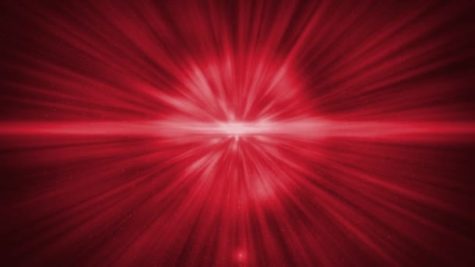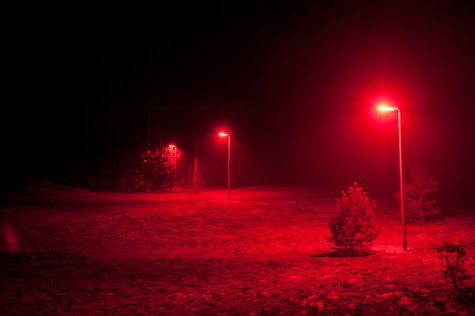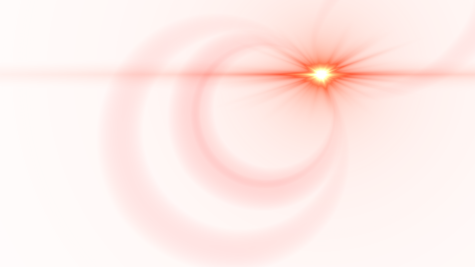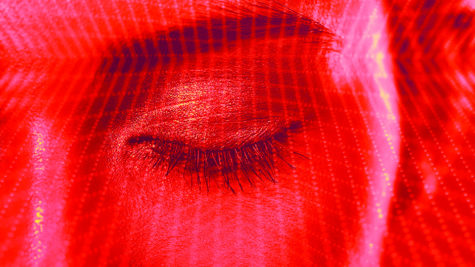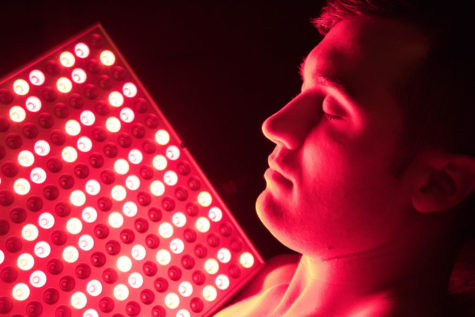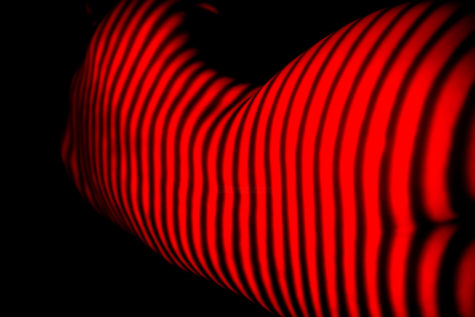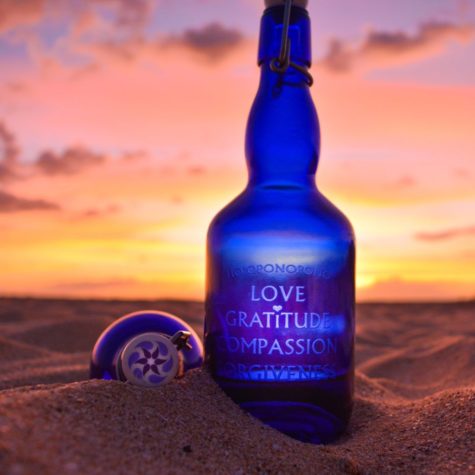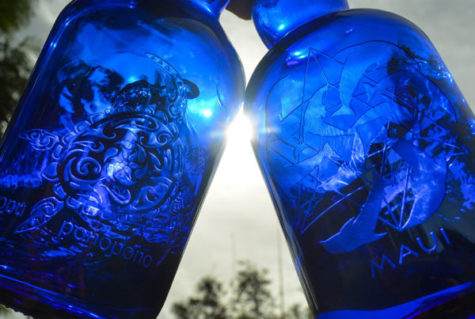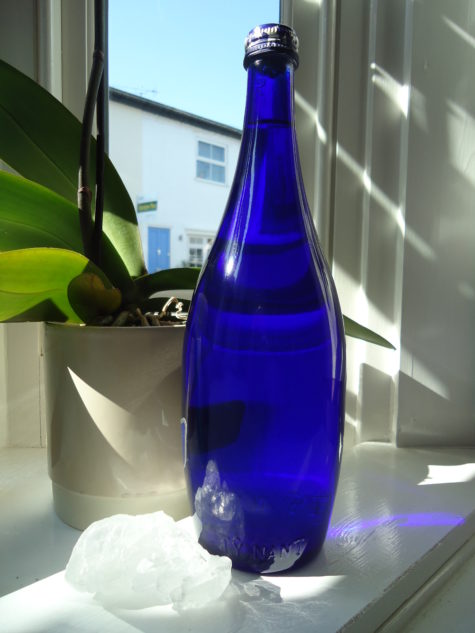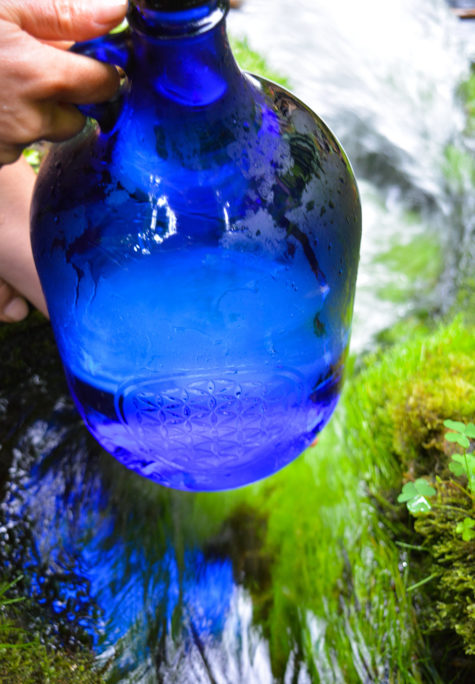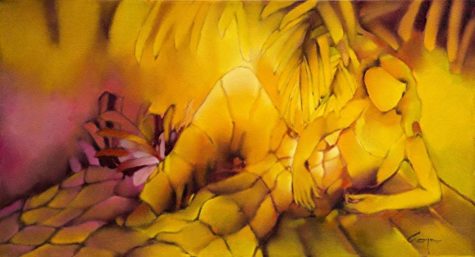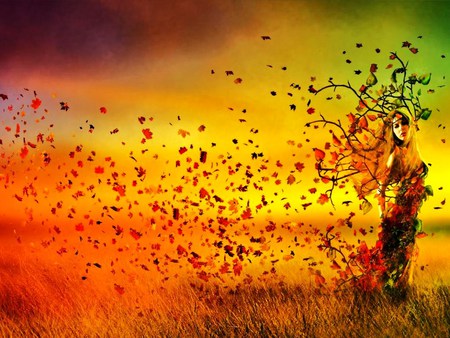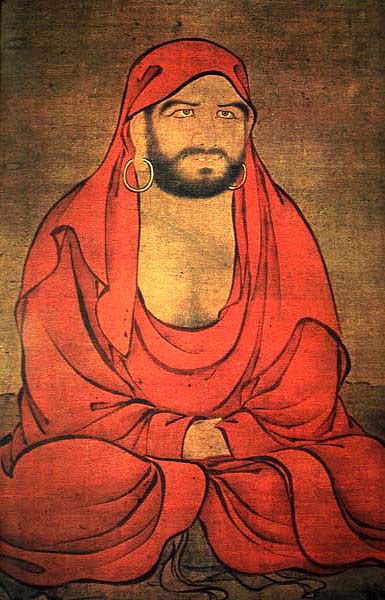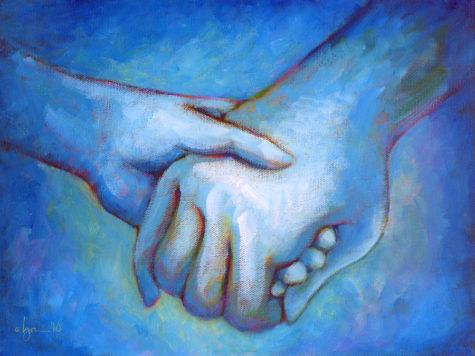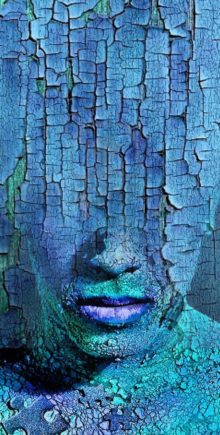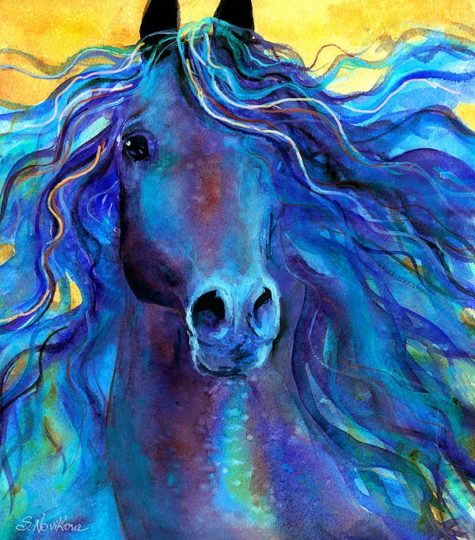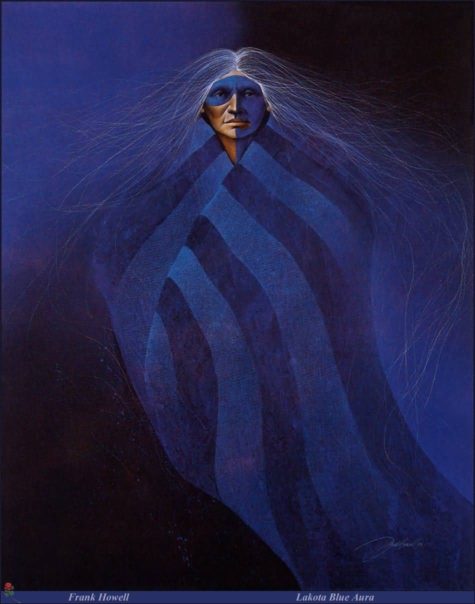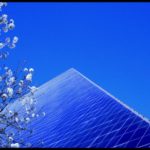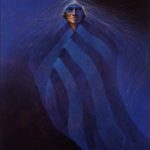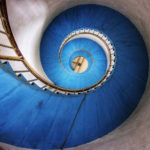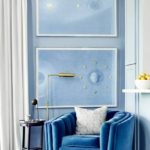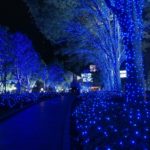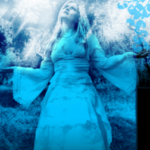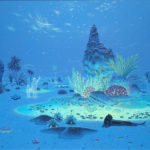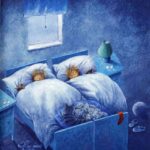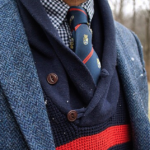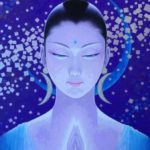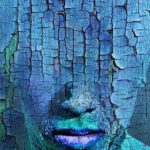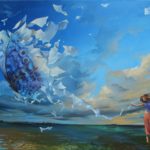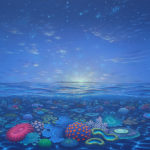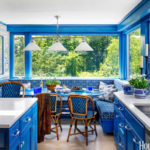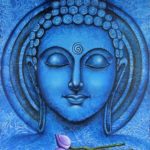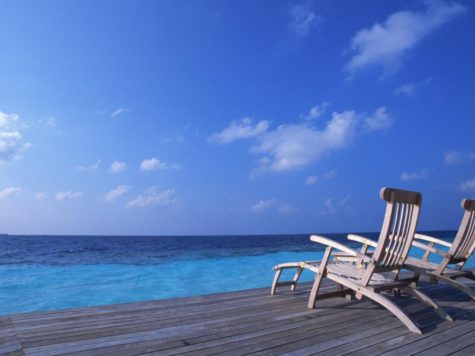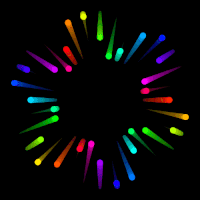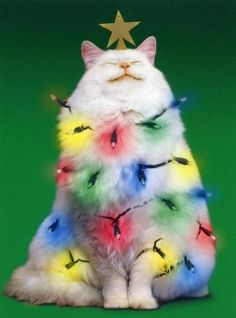Individual Colors
Red Light For Your Eyes
Declining eyesight can be improved by looking at red light, pilot study says. Red lights can help prevent damage to mitochondria in the retina, which leads to declining eyesight. It will be as easy as brushing your teeth or shaving, and as long as future studies support it, it just might save your eyesight.
Here’s the scoop on it from CNN:
A few minutes of looking into a deep red light could have a dramatic effect on preventing eyesight decline as we age, according to a new study published this week in The Journals of Gerontology.
If the results are replicated in future studies, and approved by the US Food and Drug Administration, the light could augur a new era in which millions of people have access to the easy home-based therapy. It would give them a new layer of protection against the natural aging processes that steal our eyes’ sensitivity to light and ability to distinguish colors.
“You don’t need to use it for very long to start getting a strong result,” said lead author Glen Jeffery, a professor of neuroscience at University College London’s Institute of Ophthalmology.
The science works, Jeffery said, because the light stimulates the health of mitochondria, which are like batteries in our cells.
And because mitochondria are implicated in a broad range of diseases, insights like these could help lead to new treatments for diseases including Parkinson’s and diabetes.
All it takes is a few minutes.
The study was small, a pilot study to test the concept. Researchers recruited 12 men and 12 women, whose ages ranged from 28 to 72. Each participant was given a small handheld flashlight that emitted a red light with a wavelength of 670 nanometers. That wavelength is toward the long end of the visible spectrum, and just short of an infrared wavelength, which tends to be invisible to the human eye.
They spent three minutes each day looking into the light over a period of two weeks.
The lights work on both cones and rods in the eye. Cones are photo receptor cells that detect color and work best in well-lit situations. Rods, which are much more plentiful, are retina cells that specialize in helping us see in dim light, according to the American Academy of Ophthalmology.
Researchers measured the cone function in subjects’ eyes by having them identify colored letters with low contrast. And they measured their eyes’ rod sensitivity by asking them to detect light signals in the dark.
There was a 14% improvement in the ability to see colors, or cone color contrast sensitivity, for the entire two dozen participants.
Improvement, however, was most significant in study participants over age 40. For those ages, cone color contrast sensitivity rose by 20% over the course of the study.
That age bracket also saw significant increases in rod threshold, which corresponds to the ability to see in low light. Study participants under 40 also experienced some improvement, but didn’t see the same jump as older subjects. Younger eyes haven’t declined as much as older eyes.
“The retina ages faster than any other organ in your body,” Jeffery said. “From an evolutionary perspective, we fundamentally have never lived past 40.”
Now, of course, we regularly live well beyond that age, and need ways to nurture the organs that for millennia have been the most likely to wear out earliest in life.
Researchers from University College London used small red lights like this one to stimulate retina mitochondria with the goal of stoppying eyesight loss.
Adults ages 40 and higher are are at the highest risk for eye diseases such as cataracts, diabetic retinopathy, glaucoma and age-related macular degeneration, according to the US Centers for Disease Control and Prevention.
These diseases can occur in young people but their prevalence increases with age. At the beginning stages, these conditions are treatable, although they can start creeping in before symptoms appear.
That’s why the AAO recommends increasing regular eye exams to every two to four years for people once they cross age 40, and to increase exams to every one to two years at age 65.
The CDC notes that the progression of these diseases can also be slowed by eating a diet rich in antioxidants and maintaining normal levels of blood sugar, body weight and blood pressure. If those indicators get out of normal range, they can further degeneration by breaking down blood vessels in the eyes, the American Heart Associations says.
It’s easy and safe to use
This new study in humans builds on results in fruit flies and in mice, which also showed that red light could improve the functioning of mitochondria.
For instance, a 2015 study showed that near-infrared light could spur energy production, improve mobility and extend the lifespan of fruit flies. And a 2017 study of visible red light at the edge of infrared reported a 25% improvement in the functioning of retinas in mice.
Longer-term independent safety studies of red lights in humans would have to garner similar benefits for this method of eyesight protection to be approved by the FDA. If so, you’d still need to use a properly vetted product under a doctor’s supervision.
For example, while the laser pointers approved by the FDA for sale in the US don’t cause eye damage, a 2018 case study in the New England Journal of Medicine outlined how a boy in Greece permanently injured an eye by pointing a green laser pointer into it.
One of the best assets of the red lights they used is that they are safe, Jeffery said. The researchers all tested the red lights on their own eyes before beginning the study and have found no ill effects.
The research subjects in the study also reported no ill effects. “If you use this every day, we have no evidence to say it’s detrimental,” Jeffery said.
That fits with prior research, in which the safety of red lights has long been established, explained Dr. Raj Maturi, an associate professor at Indiana University School of Medicine. It would be a very easy pathway to FDA approval,” he said. But more studies are needed to prove it helps. Although these lights aren’t harmful, Maturi wasn’t ready to embrace the idea that they’re incredibly helpful either.
This pilot study lacked a control group of patients who could have been exposed to a dummy light that emitted, he noted. The results found in this small study of 24 participants might not bear out in the larger population. Of the subjects over 40 in this study, individual characteristics of a few of them would be enough to make the eyesight improvements look stronger than they actually are.
“The data set could be brought down by three or four subjects,” he said. And while participants improved in how they saw the blue color axis, Maturi pointed out that they didn’t have statistically significant gains in how they saw the red color axis. To really test these insights, it’ll take a double-blind controlled study with a larger group of subjects and longer monitoring over time.
LED lights could help with many diseases
LED lights work in this arena because of what scientists call the mitochondrial theory of aging, in that humans and animals age as damage accumulates in mitochondria and mitochondrial DNA.
Therefore stimulating mitochondria to reduce damage is a way of slowing aging in general. Our retinas are chock-full of mitochondria — the highest concentration of mitochondria of any part of the body.
That’s a main reason why Jeffery and his colleagues sought to test out the red lights in a specific area of aging such as eyesight decline. Mitochondria absorb longer wavelengths of light, making the near-infrared light their preferred choice to test.
Red lights can improve function in a range of diseases, particularly in the mitochondria in those undergoing aging with conditions such as Parkinson’s, he noted. “Every disease could have a mitochondrial angle,” Jeffery said. “In diabetes, for instance, your mitochondria are very upset.”
Each application carries that same human desire to fend off processes that are both natural and universal. “We’re all going to suffer from aging. So let’s try to go gently if we can,” he said.
Red Light Therapy
Red light therapy (RLT) is a treatment that may help skin, muscle tissue, and other parts of your body heal. It exposes you to low levels of red or near-infrared light. Infrared light is a type of energy your eyes can’t see, but your body can feel as heat. Red light is similar to infrared, but you can see it.
Red light therapy is also called low-level laser therapy (LLLT), low-power laser therapy (LPLT), and photobiomodulation (PBM).
How Does Red Light Therapy Work?
With red light therapy, you expose your skin to a lamp, device, or laser with a red light. A part of your cells called mitochondria, sometimes called the “power generators” of your cells, soak it up and make more energy. Some experts think this helps cells repair themselves and become healthier. This spurs healing in skin and muscle tissue.
Red light therapy uses very low levels of heat and doesn’t hurt or burn the skin. It’s not the same type of light used in tanning booths, and it doesn’t expose your skin to damaging UV rays.
What Does It Treat?
Researchers have known about red light therapy for a while. But there aren’t a lot of studies on it, and they don’t know if it’s better than other types of treatment used to help you heal. Red light therapy may help with:
- Dementia.
In one small study, people with dementia who got regular near-infrared light therapy on their heads and through their noses for 12 weeks had better memories, slept better, and were angry less often.
- Dental pain.
In another small study, people with temporomandibular dysfunction syndrome (TMD) had less pain, clicking, and jaw tenderness after red light therapy.
- Hair loss.
One study found that men and women with androgenetic alopecia (a genetic disorder that causes hair loss) who used an at-home RLT device for 24 weeks grew thicker hair. People in the study who used a fake RLT device didn’t get the same results.
- Osteoarthritis.
One study found red and infrared light therapy cut osteoarthritis-related pain by more than 50%.
Tendinitis. A very small study of 7 people suggests RLT lessens inflammation and pain in people with Achilles tendinitis.
Wrinkles and other signs of skin aging and skin damage. Research shows RLT may smooth your skin and help with wrinkles. RLT also helps with acne scars, burns, and signs of UV sun damage.
What Are the Risks?
Red light therapy is generally considered safe, even though researchers aren’t exactly sure how and why it works. And there are no set rules on how much light to use. Too much light may damage skin tissue, but too little might not work as well.
Where Do You Get Red Light Therapy?
It’s usually done in a doctor’s office. But some salons and dental offices do it, too. You can also buy your own red light therapy device. Salon and at-home treatments are more likely to cause side effects or injury. Talk to your doctor if you’re thinking about red light therapy.
Source: Web MD
Blue Solar Water
Blue Solar Water is easy to make, delicious to drink and is very a powerful tool for healing the body and spirit.
As we know, water carries vibrations, energy frequency, crystals, colors… Blue solar water provides the best: the powerful energy of the sun, the source of all life, and the fascinating properties of the healing and calming blue color. This water has become a favorite and popular after the book Zero Limits by Dr. Hew Len and above all through Ho’oponopono, an ancient Hawaiian healing technique.
In addition to being extremely healthy, this water helps cleanse the deep negative subconscious programs that we automatically repeat over and over again. Blue solar water heals emotional wounds and blockages, takes them to the surface and relieves us from them so that we get reset back to zero, in a pure state, to a clean start, without the background noise of negative thoughts. This water meets positivity, peace and love. And everyone can drink it, children, sick with cancer, especially those on chemotherapy. It is even tastier than plain water. And it is very easy to make.
Why blue?
Blue is the color of the fifth chakra, the so-called power center or the throat chakra (Vishuddha). The throat chakra is extremely important because it is the way through which energy from the higher energy centers can move to the lower ones and vice versa. It is the first center of higher frequencies and only when it is completely clean and open, we can reach higher states of consciousness. It is a bridge between the physical and the spiritual world, between the heart and the mind. It separates the secular from the sacred and transmitters the intention of the soul.
And it has been scientifically proven that the color blue has a tremendously powerful impact on our brains, decision-making and behavior.
Blue sky means a nice, relaxing day. Clean calm blue sea means calmness and serenity. In fact, everything blue symbolizes trust, loyalty, wisdom, confidence, intelligence, faith, truth, and heaven. Krishna is blue.
Science says it’s no coincidence these blue things make all of us us feel so good. After all, blue is the only color spectrum that can effectively prevent people from committing suicide.
It is proven that the color blue has a calming effect on people, and that is why it is used in different ways. In 2000, police in Glasgow, Scotland, installed blue lights in areas with a high crime rate. Since then, crime in those infamous neighborhoods decreased by 9%.
In Japan, several major railway companies switched to only blue lights at all railway crossings. To date they have a stunning success: In 2007, a year before the blue lights were installed, they had 640 suicides. In 2008, after the lights were installed, there were zero suicides!
If this is all strange and you do not believe in the incredible efficiency of blue, read on.
One theory says that the color itself has a tangible, biological effect on our brain chemistry. Harold Wohlfarth, president of the German Academy of Color Science, conducted a study in which he found that blue color lighting actually had a psychological impact on children and adults, and what is particularly bizarre in all things is the fact that it had the same effect even on blind people.
Wohlfarth believes that traces of electromagnetic energy from the blue light affects certain neurotransmitters in the brain. When light of a certain color falls on the eye, even if the eye is blind, it affects the gland that produces melatonin, which creates a chain reaction that elevates mood and calms emotions.
How to make Blue solar water?
All you need is a blue glass bottle (the shade of blue is not important) and fill it up with filtered, spring or plain tap water. You also need to make sure that the cap you seal the bottle with is not made of metal. It can be glass or plastic, but never use metal. The cap only serves as a protection against dust or insects that are very fond of this water.
This water bottle should be then kept on the sun for 1-12 hours. The longer you keep it on the sun, the sweeter its taste will get. But remember not to keep it longer than 12 hours.
How to drink it?
Drink this water as much as possible, it is very tasty and drinkable. Somehow, our body recognizes it, so even those who don’t drink so much water will have no problem drinking a few liters.
In addition to drinking it, you can use this water for cooking, watering flowers, for your animals, add it in the washing machine, dishwasher, put in a sprayer and refresh the rooms, add it to your bath…
Once you have made your Blue Solar Water you can transfer it into another container, plastic or glass, doesn’t matter. It can be kept in the refrigerator or at room temperature.
If you get really excited about the solar water, here are some other uses:
- Add some to your coffee, tea, cocoa, juice, etc
- Add Blue Solar Water to everything you cook, pasta, soup, oatmeal, scrambled eggs, etc.
- Add some Blue Solar Water to your washing machine when washing clothes
- Spray some in your dryer
- Add it to your radiator to make your car hummmm
- Add it to your bath water
- Spray yourself with Blue Solar water after showering
- Spray rooms with Blue Solar Water
- Gargle with it.
- Wash floors with it
- Wash your car with Blue Solar Water
From: Shift Frequency
The Psychology of Yellow
Some of the key characteristics that are often associated with the color yellow include:
- Warmth:
Yellow is a bright color that is often described as warm.
- Difficult to read:
Yellow is also the most fatiguing to the eye due to the high amount of light that is reflected. Using yellow as a background on paper or computer monitors can lead to eyestrain or vision loss in extreme cases.
- Frustration:
Yellow can also create feelings of frustration and anger. While it is considered a cheerful color, people are more likely to lose their tempers in yellow rooms and babies tend to cry more in yellow rooms.
- Energetic:
As seen in the following quote, yellow is often perceived as being a high-energy color. It is often used in situations and products intended to create a sense of excitement or energy. It is bright and immediately grabs the eye. It can seem fresh, intense, overwhelming, or even brash and forceful in its energy. Yellow can also increase metabolism.
“Fully saturated yellow is only good for brief exposure, because its stimulating effect is so powerful that it can build up emotional energy quite quickly. I know that I would probably go nuts in a house with LEGO yellow walls. Though it should be noted that a less saturated yellow, such as that found in whipped vegetable spread (faux butter) is mildly pleasing and cheery.”
“Yellow makes me feel cheerful and energized. I love the bright sunny color and the way it makes me feel. I feel warm like summer. Perhaps sometimes startling, but then that is what energizes me.”
- Yellow Can Be Aggressive
While it can be an energetic color, this intensity can also have a downside. Sometimes yellow can come off as very aggressive and even confrontational. In great quantities, people may be left feeling irritated or even angry when surrounded by yellow.
“I agree that there is a level of aggression and frustration associated with yellow. The walls of my school are all yellow and since the new building opened, more fights have occurred in the hallways where there is the most amount of yellow. Also, some of the classrooms that have yellow in them seen to be associated with more frustrated students.”
“I find yellow to be a highly irritating color. When I’m in a yellow room, my agitation level increases whether I was in a good mood before I walked in it or not. One reason I believe I find it so annoying is that I’m an introvert and yellow is a very exposing and in your face type of color which are traits most introverts would naturally have an aversion to. Yellow is definitely an extrovert’s color.”
- Attention-grabbing:
Since yellow is the most visible color, it is also the most attention-getting color. Yellow can be used in small amount to draw notice, such as on traffic sign or advertisements.
- Yellow Is Cheerful
For many people, yellow is seen as a bright and cheerful color. Advertisers may use it to not only draw attention, but also to evoke a sense of happiness.
“I had a math class room that was painted bright yellow half way through the year. It completely changed the atmosphere and everyone’s grades seemed to go up. Our math teacher joked it must be the new paint job, but I entirely believed it was. It gave a cheery atmosphere and the lessons were far more light and enjoyable!”
“The color yellow exudes brightness, light, vitality, energy, optimism, willingness to grow and outshine. Sun stars sunflower are the objects that mostly are associated with the color yellow.”
- Yellow Is Complex
Of course, the effects of yellow can be highly varied and complex. Not everyone responds to this color in the same way. While some people might find it bright and cheery, others may find it grating and obnoxious. Some may associate it with a warm summer day, while to others it might be reminiscent of bad memories or associations.
“I like yellow. To me it’s a happy color associated with flowers and sunshine. But our kitchen is painted yellow and I find that my fiance who has a short temper almost always loses it in the kitchen. He also becomes much more impatient and argumentative. I have always suspected that it is the color of the walls. Guests also tend to eat their food faster at the kitchen table than when we entertain in the dining room (white) or outside.”
- How does yellow make you feel?
- Do you associate yellow with certain qualities or situations?
While the color yellow can evoke a lot of different psychological reactions, it is important to remember that these responses are often unique to the individuals. Some responses, such as the tendency to find yellow difficult to read, are more universal. Other associations are often cultural and even specific to each person thanks to differing backgrounds and experiences.
From: Very Well Mind
Chase Away The Winter Blues
Do you experience winter blues? An effective way to change your moody outlook is to brighten up your life with color. Research has proven that color therapy, or chromo therapy, is a natural way to lift your spirits. In particular, the following colors have power to lift the spirit, combat cabin fever and chase away those winter blues.
- Yellow
Yellow captures the joy of sunshine, communicates happiness and stimulates your mind. It helps to reduce depression, giving one a sense of hope, reminding us that spring is just around the corner. It is important to expose yourself to morning sunlight as early as you can.
- Orange
Orange evokes excitement, enthusiasm and is an energetic color. It is joyful, playful, creative, and social color.
- Red
Red stimulates the body metabolism, and encourages one to engage in activity. The color red fights depression and gives one the energy to get up and do something.
Chase away the winter blues by introducing these powerful colors in your apparel, food you eat, and your home environment. So hurrah for Yellow, Orange, and Red.
Source: Balanced Women’s Blog
Red vs Smallpox
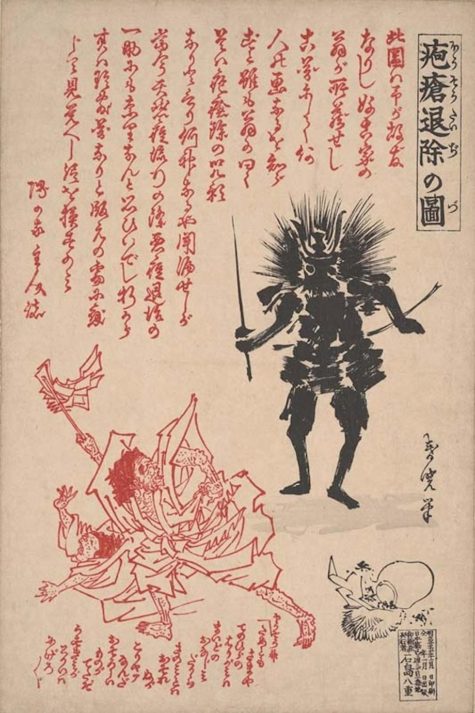
Hosogami are smallpox spirits. (Hoso is the Japanese word for smallpox.) For safe recovery to health, the Hosogami must be soothed, propitiated, and sent on their way. Hosogami are pleased to see the color red. Physicians were glad to see the color red too:
- Purple smallpox rashes indicate the illness is in a dangerous stage.
- If and when rashes turn red, the patient is expected to recover.
The person suffering from small pox and those caring for him dressed in red to appease the Hosogami. In addition, “red prints” or hoso-e prints, paper wall amulets were posted at the first hint of small pox to propitiate, avoid, and/or banish the illness.
Daruma and Shoki possess the power to expel Hosogami and are among the spirits portrayed on red smallpox talismans. They are called “red” because that’s the primary color of these prints. If no print is available, red banners may suffice.
Following the patient’s recovery, these prints were traditionally ritually burned or floated down rivers to signal the departure of the spirit. Extremely few survive and these are now extremely valuable collectors items.
Borrowed from: The Powers That Be
More About Blue
The color blue is one of trust, honesty and loyalty. It is sincere, reserved and quiet, and doesn’t like to make a fuss or draw attention. Blue hates confrontation, and likes to do things in its own way.
Key words and associations:
- Blue represents both the sky and the sea, and is associated with open spaces, freedom, intuition, imagination, expansiveness, inspiration, and sensitivity.
- Blue also represents meanings of depth, trust, loyalty, sincerity, wisdom, confidence, stability, faith, heaven, and intelligence.
- Basic meanings are truth, communication, peace, calm, spiritually attuned.
From a color psychology perspective, blue is reliable and responsible. This color exhibits an inner security and confidence. You can rely on it to take control and do the right thing in difficult times. Blue has a need for order and direction in its life, including its living and work spaces.
Blue seeks peace and tranquility above everything else, promoting both physical and mental relaxation. The color blue reduces stress, creating a sense of calmness, relaxation and order – we certainly feel a sense of calm if we lie on our backs and look into a bright blue cloudless sky. It slows the metabolism. The paler the blue the more freedom we feel. In the meaning of colors, blue relates to one-to-one communication, especially communication using the voice – speaking the truth through verbal self-expression – it is the teacher, the public speaker.
The color blue is idealistic, enhancing self-expression and our ability to communicate our needs and wants. It inspires higher ideals.
Blue’s wisdom comes from its higher level of intelligence, a spiritual perspective.
Blue is the color of the spirit, devotion and religious study. It enhances contemplation and prayer. On the other hand, blue’s devotion can be to any cause or concept it believes in, including devotion to family or work.
Blue is the helper, the rescuer, the friend in need. Blue’s success is defined by the quality and quantity of its relationships. It is a giver, not a taker. It likes to build strong trusting relationships and becomes deeply hurt if that trust is betrayed.
Blue is conservative and predictable, a safe and non-threatening color, and the most universally liked color of all, probably because it is safe and non-threatening. At the same time blue is persistent and determined to succeed in whichever endeavors it pursues.
Change is difficult for blue. It is inflexible and when faced with a new or different idea, it considers it, analyzes it, thinks it over slowly and then tries to make it fit its own acceptable version of reality.
Blue is nostalgic. It is a color that lives in the past, relating everything in the present and the future to experiences in the past.
Blue establishes calm. It’s the color of the sky and ocean and therefore gives a sense of vastness, as in “the wide blue yonder.”
Blue, the color of the ocean and sky is generally associated with many positive things. Symbols such as trust, loyalty and wisdom are all psychologically associated with blue and other symbols such as faith and heaven are included in this association. Light blue is associated with health, healing, tranquility and softness. Dark blue represents knowledge, power, integrity and seriousness and can be said to be a more depressing color than lighter shades of blue.
Positive and Negative Traits of Blue
Too much blue can create feelings of melancholy, negativity, sadness, self-righteousness, and self-centeredness. Too little blue brings about qualities of suspicion, depression, stubbornness, timidity, and unreliability. Avoid blue in cases of depression or when needing to feel more social.
Positive keywords include:
Loyalty, trust and integrity, tactful, reliability and responsibility, conservatism and perseverance, caring and concern, idealistic and orderly, authority, devotion and contemplation, peaceful and calm.
Negative keywords include:
Being rigid, deceitful and spiteful, self-righteous, superstitious and emotionally unstable, too conservative, predictable and weak, unforgiving, and frigid. It can also indicate manipulation, unfaithfulness and untrustworthiness.
Blue Represents
Blue can be strong and steadfast or light and friendly. Blue is used to symbolize piety and sincerity in heraldry. The color blue in many cultures is significant in religious beliefs, brings peace, or is believed to keep the bad spirits away. In Iran, blue is the color of mourning while in the West the something blue bridal tradition represents love.
- Communication: Blue relates to one-to-one verbal communication and self expression.
- Peace and calm: The color blue induces calm and peace within us, particularly the deeper shades.
- Honesty: Blue is the color of truth.
- Authority: The darker the color blue, the more authority it has.
- Religion: Blue is the color of devotion and religious study.
- Wisdom: Blue enhances the wisdom of the intellect.
The blue color communicates significance, importance, and confidence without creating somber or sinister feelings. This is where the corporate blue power suit and the blue uniforms of police officers and firefighter came from. Considered a highly corporate color, blue is often associated with intelligence, stability, unity, and conservatism.
Effects of Blue
- Conservative: The color blue is a safe color – the most universally liked color of all.
- Predictable: Blue is not impulsive or spontaneous and it doesn’t like to be rushed – blue needs to analyze and think things through, and to work to a plan.
- Orderly: Blue needs to have direction & order- untidiness and unpredictability overwhelms it.
- Rigid: Blue likes familiarity. It doesn’t like change and will stubbornly do things its own way, even if there is a better way.
The color blue has positive affects on the mind and the body. As the color of the spirit, it invokes rest and can cause the body to produce chemicals that are calming and exude feelings of tranquility. Blue helps to slow human metabolism, is cooling in nature, and helps with balance and self-expression. Blue is also an appetite suppressant.
However not all blues are serene and sedate. Electric or brilliant blues become dynamic and dramatic, an engaging color that expresses exhilaration. Also, some shades of blue or the use of too much blue may come across as cold or uncaring, and can dampen spirits.
Shades of Blue
Different shades, tints, and hues of blue have different meanings. For example, dark blue can be seen as elegant, rich, sophisticated, intelligent, and old-fashioned, royal blue can represent superiority, and light blue can mean honesty and trustworthiness.
Note: This post was compiled by Shirley Twofeathers for Color Therapy, you may repost and share without karmic repercussions, but only if you give me credit and a link back to this website. Blessed be.
New Age Blue
Blue has something for almost everyone, from the sky blue of a warm summer day, to the intense passionate royal and peacock blues through deep mysterious indigo. Blue is the most soothing shade of the spectrum and is probably the most common favorite color .
Blue is neutral and supports female and male energy equally. It is the traditional color of the European Great Goddess and Divine Wisdom. The color blue corresponds to the following:
- The Sephiroth at Chesed (or Mercy)
- Relates to the Setting Sun and the Waning Moon
- The “Divine Plan”
- Archangel Michael
- West
- Element of water
- The 5th or Throat Chakra
- Goddess in the Mother aspect
- Autumn
- Middle age
- The sky
Because the planet Earth is a water planet, blue is a color associated with the planet as a whole and with Earth healing. It represents the emotions, love, truth, and sincerity. This cold and cooling color also has qualities of healing and tranquility.
Other aspects of the color blue are as follows:
- Humanity
- Global synchronicity
- Yin
- Energy on the decline
- Northeast
- Written and oral skills
- Guidance and freedom
In magical use blue can be used for harmony in the home and meditation, achieving freedom, tranquilly , peace , patience, communications, honor, health, friendships, dreams, sleep, and creative inspiration.
The etheric level of the aura which is the one nearest the physical body, is often seen as a blue or blue gray layer or as a grid like duplicate of the body and its organs and energy pathways in blue lines of light.
In the Aura:
Blue in the aura often indicates a natural healer and can be seen in people in nurturing and or protective careers such as herbalists, doctors even police . People who are concerned for the welfare of others often have blue in the emotional body .
Pale blue shades can indicate deeply spiritual people or the musically or creatively gifted.
Clear rich shades are seen in intuitive individuals, and those gifted in psychic perceptions. Auras in which blue is dominant belong to people with strong personalities, they may not easily express deep emotions but have patience and deal well with life’s problems. Blue in the aura signifies one who is actively engaged in the search for their personal place in the world.
Transient in the aura blue shafts of light may be rising from the heads people in the act of creating or inventing, and when actively working on intuitive awakening and expression.
Lighter blues belong to those who are learning something. Darker blues tones are found in the auras of people who are detaching themselves from drama and are seeking peace in their daily life.
Light and sky blues are those most often used in healing work often as light or shakti energy or whatever other means is practical. A focused visualization of either an intense electric blue beam of light energy or a softer shade has been used to repair the etheric body and the etheric template by dissolving negative energy forms and reconstructing damaged and missing parts and for sealing tears in the aura. The exact shade will vary according toned and will usually be guided from spirit.
The Blue Gallery
Why Is the Ocean Blue?
It’s commonly believed that the ocean is blue because it’s reflecting the blue sky. But this is a misconception.
The ocean is blue because of the way it absorbs sunlight, according to the National Oceanic and Atmospheric Administration (NOAA).
When sunlight hits the ocean, the water strongly absorbs long-wavelength colors at the red end of the light spectrum, as well as short-wavelength light, including violet and ultraviolet. The remaining light that we see is mostly made up of blue wavelengths.
However, NOAA notes that the ocean may take on other hues, including red and green, if light bounces off objects floating near the surface of the water, such as sediment and algae.
Just how blue the water is depends on how much of it is available to absorb the light.
For instance, water in a glass is clear — there aren’t enough water molecules to really absorb the light.
But ocean water appears bluer the farther you travel down the water column. The water molecules absorb infrared, red and ultraviolet light first, and then yellow, green and violet.
Blue light is absorbed the least, giving it the greatest ocean penetration depth, according to NASA.
This fact is clear if you look at unedited underwater photos that weren’t taken with a camera flash or another artificial light source — even the most vibrant of tropical fish look blue.
Source: Live Science

